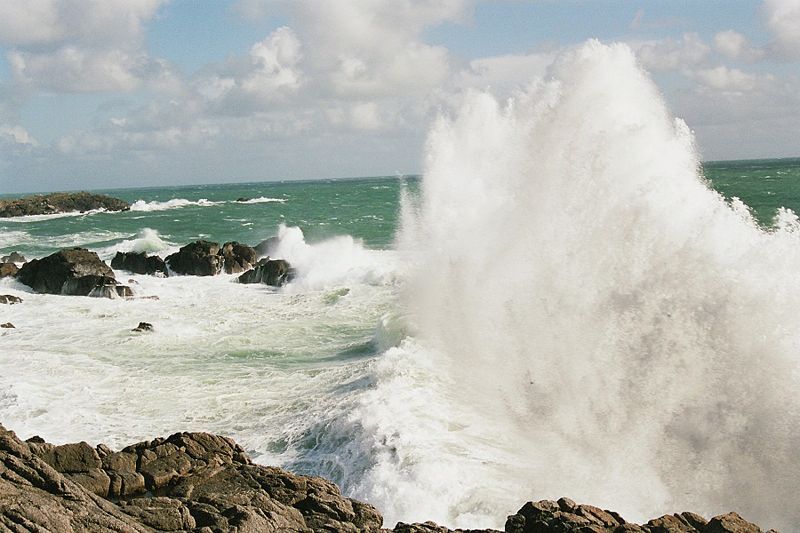Energy is the ability to cause a change of state or to cause movement.
In nature, energy takes many forms. Humans have developed means to transform the natural manifestations of energy into useful energy, such as electricity, in order to meet their daily needs. Thus, in addition to solar energy, we can find various forms of energy within the different spheres of the Earth.
The information supplied in this concept sheet can be enhanced by referring to various concept sheets in the Material World section.
Some concepts explained in the Earth and Space section can also provide you with additional information on the topic of energy.
The Sun generates an enormous amount of energy. Solar energy is the part of solar radiation that passes through the atmosphere and reaches Earth.
Humans can directly use solar radiation to meet their needs. For example, the Sun allows us to light up our homes or even to heat a building by orienting it according to the sun’s rays. It is also possible to transform solar energy into a useful form of energy, such as electrical energy, using photovoltaic solar panels.
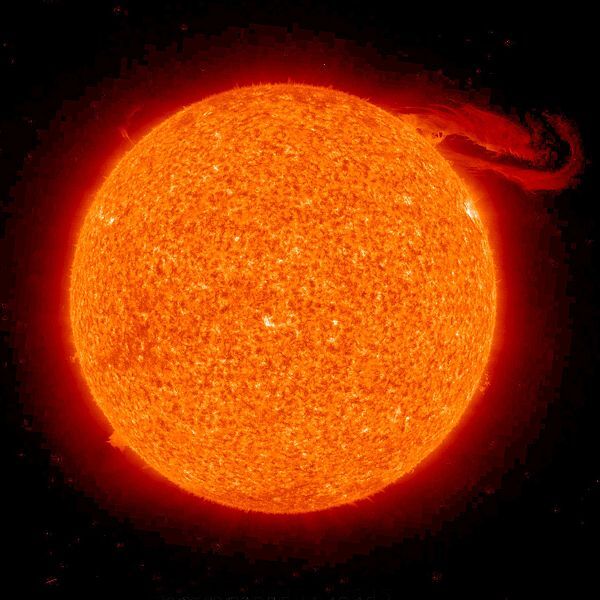
The Sun

Photovoltaic solar panels
Solar energy is also the basis of all other natural manifestations of energy. For example, the water cycle is generated by the formation of water vapour under the heat of solar radiation, atmospheric currents result from temperature differences between two air masses, and photosynthesis, which allows chemical energy to be stored in living organisms, would be impossible without the Sun.
The water cycle is driven by solar energy. Water evaporates into the atmosphere under the impact of solar radiation. The water vapour condenses in the atmosphere and then releases all the energy it has stored, which helps to heat the air. During precipitation, water will return to lakes, rivers, and oceans, so the cycle can begin again. The different movements of water produce energy. There are three manifestations of energy in the hydrosphere.
-
Hydraulic energy is the energy related to the movement of water, mainly under the action of gravity. This form of energy can be transformed into electricity through the use of hydro-electric power stations. Moreover, this is the main source of electricity in Quebec.
-
Tidal energy is the energy related to the periodic changes in sea or ocean levels — the tides. This source of energy is exploited in regions where the tides are strong, mainly on the European coasts. In North America, there is only one tidal power station in Nova Scotia, at the mouth of the Bay of Fundy.
-
Wave and current energy is the energy related to the movement of water when waves are generated by wind and when large scale ocean currents occur. Although waves have a large amount of energy, this source is little used since it varies a lot depending on the intensity of the waves. Also, certain sea currents, such as the Gulf Stream or the Labrador Current, move at very high speed. Their energy is therefore important due to this speed, but it is difficult to harness since it is located out in the ocean. It is therefore a poorly exploited source of energy.
The following are examples of natural manifestations of energy in the hydrosphere.

Waterfall
Here are examples showing how the hydrosphere can be used to generate energy.

The Jean-Lesage generating station, a hydroelectric dam in Quebec

Tidal power station in Nova Scotia

Tidal turbine used to capture the energy of sea currents
Air currents are caused by a combination of two factors: the rotation of the Earth and the uneven warming of different regions of the planet. Thus, solar radiation is the basis of the energetic manifestations observed in the atmosphere. The main manifestation observed is wind.
-
Wind power is the energy generated by the wind, that is, by the motion of air masses. Wind is generated when there is a difference in temperature, and consequently in pressure, between two air masses. The air then tends to move from a region where the air is cold to a warmer region. The wind generated through this phenomenon can be directly used by humans to ventilate homes, to cool off, or to dry clothes outside. It also uses certain devices, particularly wind turbines, to convert the wind into electrical energy.
The following are examples of natural manifestations of energy in the atmosphere.
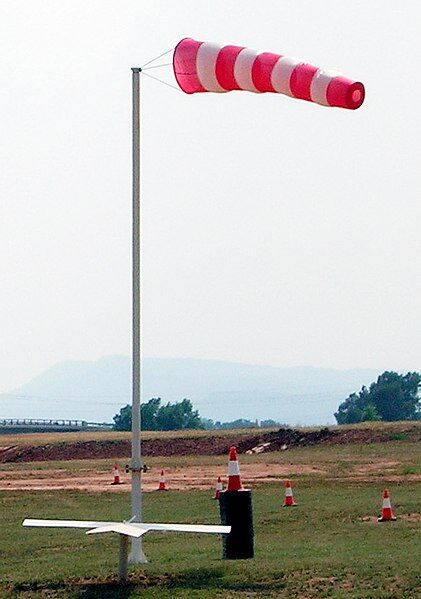
Wind sock inflated by the wind
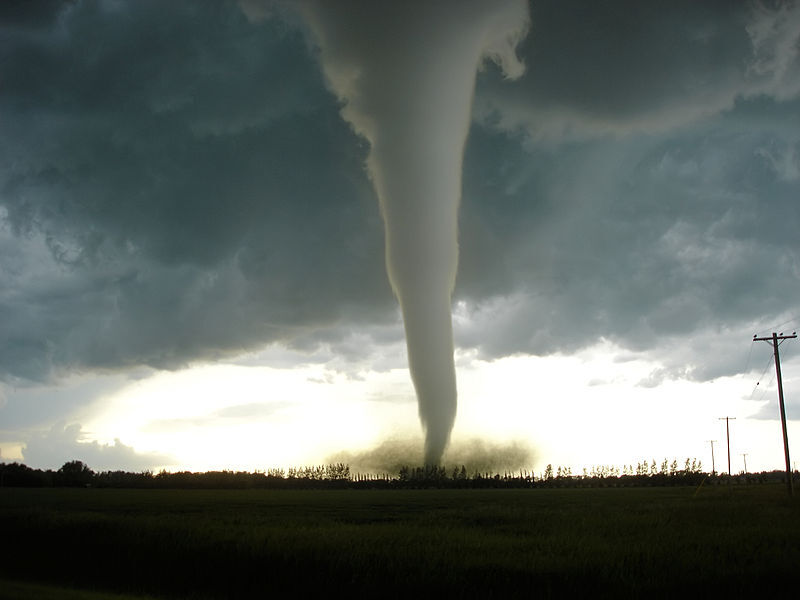
Tornado
Here is a device to use the energy generated by the atmosphere.
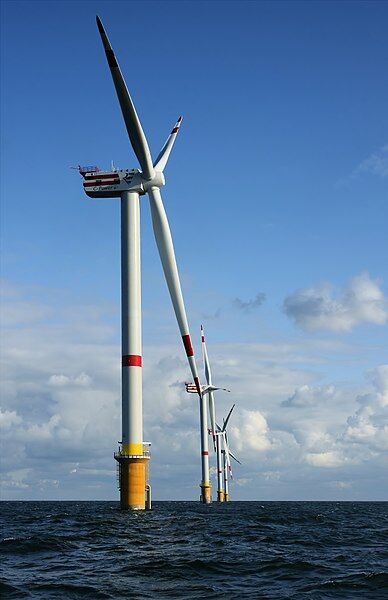
Wind turbine
Energy from the Sun is the foundation of life on Earth. In addition to creating a climate that is suitable for life, it also enables the photosynthesis of plants. Solar energy is then transformed into chemical energy which is then used by all living organisms. Plants form the basis of all food chains. The form of energy contained in living organisms is called biomass energy.
-
Biomass energy is the energy stored in living organisms. The term biomass is a synonym for organic matter. This form of energy can be used in various ways. For example, it is by consuming biomass (by eating) that humans find the energy they need to function. It is also possible to burn organic matter, such as wood, in order to keep warm. Finally, the combustion of organic matter can allow us to convert the energy of biomass into electrical energy. This transformation is sometimes called bioenergy.
The following are examples of biomass energy manifestations.

Wood combustion

Energy flux along the food chain
The lithosphere contains three major sources of energy used by humans. Two of them, geothermal energy and nuclear energy, are not derived from solar energy. However, the energy contained in fossil fuels has a connection with the Sun since these fuels are produced by the decomposition of living organisms.
-
Fossil energies come from the transformation of plants into mineral substances. Over millions of years, organic debris as well as dead living organisms slowly decomposed and, in the absence of oxygen and under great pressure, turned into fossil fuels. These fuels are known as coal (solid form), petroleum (liquid form), and natural gas (gaseous form). They are mainly used for transport and for the production of electricity.
-
Geothermal energy is energy related to the internal heat of Earth. The magma located under the lithosphere transfers its heat to the groundwater and the subsurface of the Earth’s crust. The water, then reheated by the intense heat, can rise to the surface in the form of water vapour. Geysers and thermal springs are natural manifestations of this phenomenon. This heat can also be used in hot water heating systems or transformed into electrical energy through the use of geothermal power plants.
-
Nuclear energy is found in the nuclei of atoms of certain chemical elements. These so-called radioactive elements naturally give off highly energetic radiation. Although this type of energy is difficult to control, it is often transformed into electricity.
Here are some examples of fossil fuels.

Lumps of coal

Pump jack used to extract petrol
Here are some examples of geothermal energy.
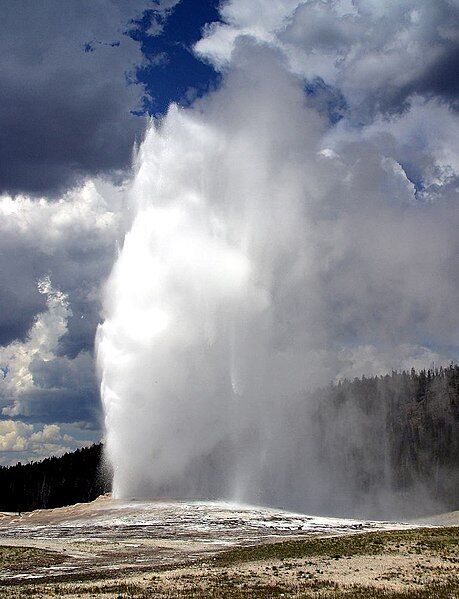
Geyser in Yellowstone Park in the United States
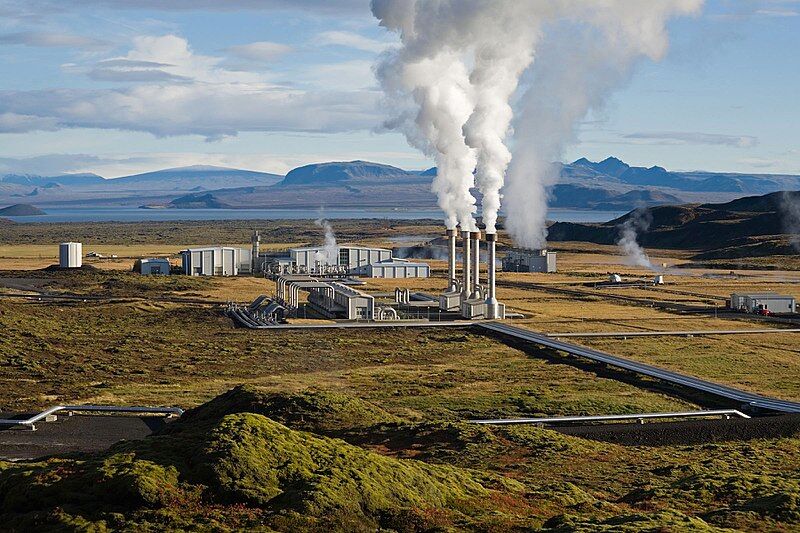
Geothermal power plant in Iceland
Here are some examples related to nuclear energy.

Nuclear power plant
